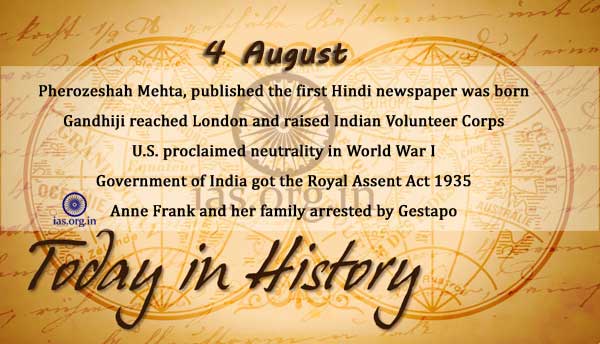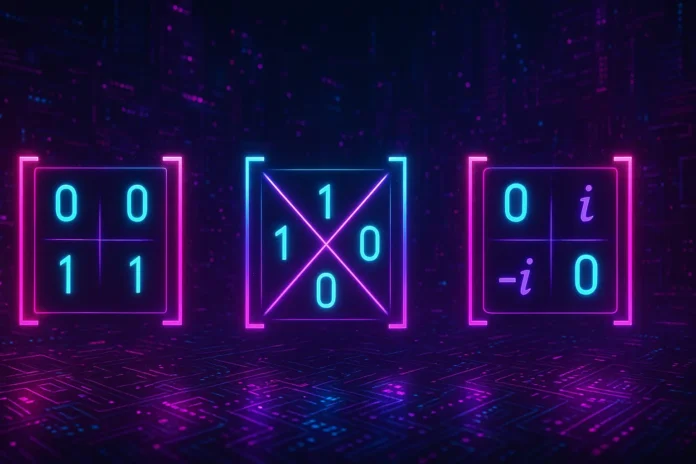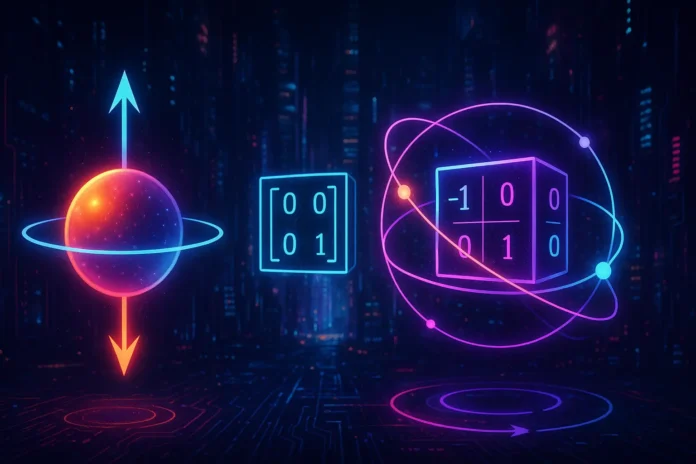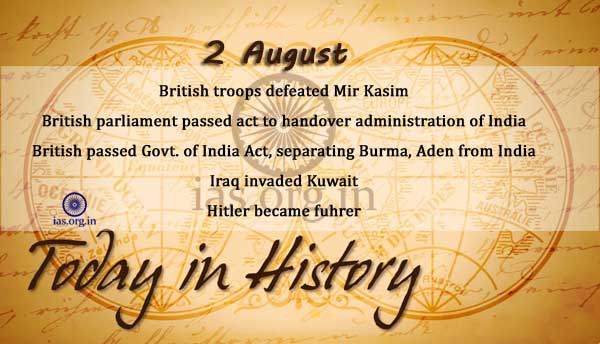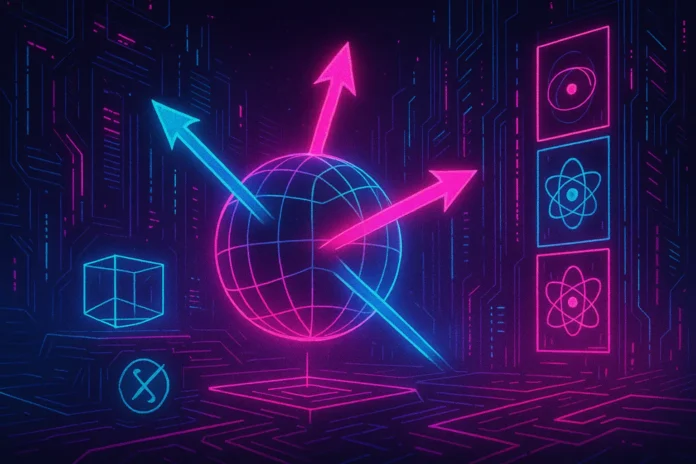Table of Contents
- Introduction
- Classical vs Quantum Angular Momentum
- Angular Momentum in Quantum Mechanics
- Commutation Relations of Angular Momentum Operators
- Ladder Operators \( L_+ \) and \( L_- \)
- Eigenstates and Quantum Numbers
- Total Angular Momentum and \( \hat{L}^2 \)
- Orbital Angular Momentum in Spherical Coordinates
- Spherical Harmonics as Angular Eigenfunctions
- Visualization of Angular Momentum States
- Spin Angular Momentum (Preview)
- Angular Momentum Algebra and SU(2)
- Addition of Angular Momenta
- Physical Interpretation and Conservation
- Applications in Atomic, Molecular, and Nuclear Physics
- Conclusion
1. Introduction
Angular momentum plays a central role in both classical and quantum physics. In quantum mechanics, angular momentum operators are key observables governing rotational motion, orbital shapes, atomic transitions, and spin. They are deeply tied to symmetries, conservation laws, and fundamental group theory structures.
2. Classical vs Quantum Angular Momentum
Classical:
\[
\vec{L} = \vec{r} \times \vec{p}
\]
- A continuous vector quantity
- Describes rotational motion
Quantum:
- Angular momentum is quantized
- Represented by Hermitian operators
- Components obey non-commutative algebra
3. Angular Momentum in Quantum Mechanics
Angular momentum is described by the operator:
\[
\hat{\vec{L}} = \hat{\vec{r}} \times \hat{\vec{p}} = -i\hbar (\vec{r} \times \nabla)
\]
Its components:
- \( \hat{L}_x = -i\hbar (y \partial_z – z \partial_y) \)
- \( \hat{L}_y = -i\hbar (z \partial_x – x \partial_z) \)
- \( \hat{L}_z = -i\hbar (x \partial_y – y \partial_x) \)
4. Commutation Relations of Angular Momentum Operators
The components of angular momentum satisfy:
\[
[\hat{L}_x, \hat{L}_y] = i\hbar \hat{L}_z, \quad [\hat{L}_y, \hat{L}_z] = i\hbar \hat{L}_x, \quad [\hat{L}_z, \hat{L}_x] = i\hbar \hat{L}_y
\]
And for total angular momentum:
\[
[\hat{L}^2, \hat{L}_i] = 0
\]
This means \( \hat{L}^2 \) commutes with all components — it is a scalar operator.
5. Ladder Operators \( L_+ \) and \( L_- \)
Define:
\[
\hat{L}_\pm = \hat{L}_x \pm i \hat{L}_y
\]
These raise or lower the magnetic quantum number \( m \) of a given eigenstate:
\[
\hat{L}_\pm | \ell, m \rangle = \hbar \sqrt{\ell(\ell+1) – m(m \pm 1)} | \ell, m \pm 1 \rangle
\]
6. Eigenstates and Quantum Numbers
Angular momentum eigenstates satisfy:
\[
\hat{L}^2 | \ell, m \rangle = \hbar^2 \ell(\ell + 1) | \ell, m \rangle
\]
\[
\hat{L}_z | \ell, m \rangle = \hbar m | \ell, m \rangle
\]
Where:
- \( \ell \in {0, 1, 2, \dots} \)
- \( m \in {-\ell, -\ell+1, \dots, \ell} \)
7. Total Angular Momentum and \( \hat{L}^2 \)
The total angular momentum operator:
\[
\hat{L}^2 = \hat{L}_x^2 + \hat{L}_y^2 + \hat{L}_z^2
\]
Its eigenvalue \( \hbar^2 \ell(\ell+1) \) gives the magnitude squared of angular momentum, while \( m \hbar \) gives its z-component.
8. Orbital Angular Momentum in Spherical Coordinates
In spherical coordinates, \( \hat{L}_z \) and \( \hat{L}^2 \) simplify:
\[
\hat{L}_z = -i\hbar \frac{\partial}{\partial \phi}, \quad \hat{L}^2 = -\hbar^2 \left[ \frac{1}{\sin\theta} \frac{\partial}{\partial \theta} \left( \sin\theta \frac{\partial}{\partial \theta} \right) + \frac{1}{\sin^2\theta} \frac{\partial^2}{\partial \phi^2} \right]
\]
These are directly related to spherical harmonics.
9. Spherical Harmonics as Angular Eigenfunctions
Spherical harmonics \( Y_\ell^m(\theta, \phi) \) are eigenfunctions of both \( \hat{L}^2 \) and \( \hat{L}_z \):
\[
\hat{L}^2 Y_\ell^m = \hbar^2 \ell(\ell+1) Y_\ell^m, \quad \hat{L}z Y\ell^m = \hbar m Y_\ell^m
\]
They describe the angular part of hydrogenic orbitals and represent angular probability distributions.
10. Visualization of Angular Momentum States
- \( \ell = 0 \): spherically symmetric (s-orbital)
- \( \ell = 1 \): dumbbell-shaped (p-orbitals)
- \( \ell = 2 \): cloverleaf (d-orbitals)
Shapes and orientations are determined by \( \ell \) and \( m \).
11. Spin Angular Momentum (Preview)
Unlike orbital angular momentum, spin is an intrinsic form of angular momentum with no classical analogue:
\[
\hat{S}^2 |s, m_s \rangle = \hbar^2 s(s+1) |s, m_s \rangle, \quad \hat{S}_z |s, m_s \rangle = \hbar m_s |s, m_s \rangle
\]
For electrons: \( s = \frac{1}{2}, \quad m_s = \pm\frac{1}{2} \)
12. Angular Momentum Algebra and SU(2)
The algebra of angular momentum operators defines the Lie algebra of the SU(2) group, making angular momentum a representation of rotation symmetry in 3D space.
Key structure:
\[
[J_i, J_j] = i \hbar \epsilon_{ijk} J_k
\]
13. Addition of Angular Momenta
When combining two systems with angular momenta \( \vec{J}_1 \) and \( \vec{J}_2 \):
- Total angular momentum: \( \vec{J} = \vec{J}_1 + \vec{J}_2 \)
- Resulting states: \( |j, m\rangle \), with \( j = |j_1 – j_2| \) to \( j_1 + j_2 \)
Used in:
- Coupled spin systems
- Atomic term symbols
- Nuclear structure
14. Physical Interpretation and Conservation
Angular momentum is conserved when the Hamiltonian is rotationally symmetric:
\[
[\hat{H}, \hat{L}^2] = [\hat{H}, \hat{L}_z] = 0
\]
This leads to quantized selection rules in transitions and emission/absorption spectra.
15. Applications in Atomic, Molecular, and Nuclear Physics
- Spectroscopy: allowed transitions depend on angular momentum conservation
- Atomic orbitals: labeled by \( \ell \) and \( m \)
- Nuclear spins and magnetic moments
- Rotational states of molecules
Angular momentum governs the structure and behavior of matter at every scale.
16. Conclusion
Angular momentum operators are foundational in quantum mechanics, revealing deep structure in how systems rotate, interact, and conserve symmetry. Mastery of their algebra, eigenstates, and physical interpretation unlocks critical insights across atomic physics, field theory, and quantum technologies.
.


